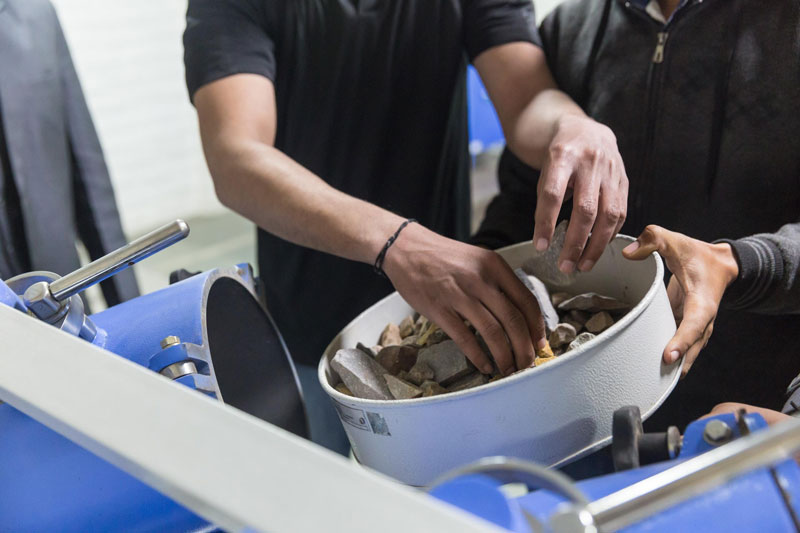


The test for finding the specific gravity of Portland cement was originally considered to be of value in detecting adulteration and under burning, but is no longer thought to be of much importance in view of the fact that other tests lead to more definite conclusions.
PORTLAND CEMENT SPECIFIC GRAVITY LAB FREE
The kerosene or Naptha should be completely free from water.While pouring cement in the Lechatelier flask, care should be taken to avoid splashing and cement should not adhere to the inside of the flask above the liquid.If the difference between the two values differs by more than 0.03, the test shall be repeated. Note ::Two tests shall be carried out and the average is reported.The density is calculated as per the below mentioned formula to the second place of decimal. The difference between the first and final readings represents the volume of liquid displaced by the mass of cement used in test. Keep the flask again in constant temp water bath and note down the new liquid level as final reading.Insert the glass nipple into the flask and roll it gently in an inclined position to free the cement from air until no further air bubble rises to the surface of the liquid.Splashing should be avoided and cement should not be allowed to adhere to the sides of the flask above the liquid. Introduce about 60 g of cement into the flask so that the level of kerosene rises to about say 22 ml mark.Record the level of the kerosene oil in the flask as initial reading.Immerse the flask in a constant temp water bath maintained at room temp for sufficient time.Cement will react with water, so to prevent this reaction kerosene should be used. Dry the inside of the flask above the level of the liquid. The specific gravity of Portland cement is generally about (3.12-3.19).Dry the Le-chatelier flask and fill with kerosene oil or Naptha to a point on the stem between 0 and 1 ml.Le chatelier flask Environmental Conditions Temp The specific gravity, surface moisture, and absorption values calculated in this test method are used for the design of internally-cured concrete mixtures.Specific gravity is defined as the ratio between the weight of a given volume of cement and weight of an equal volume of water. This test method covers the determination of the relative density (specific gravity), surface moisture, and absorption properties of lightweight fine aggregate in the field or laboratory. Determining the Relative Density (Specific Gravity), Moisture Content, and Absorption of Lightweight Aggregate This method of test describes the procedure for determining the pH for aggregate samples. This test is designed to determine the proportion of dust or clay material in fine aggregates using a mechanical shaker.įine Aggregate Angularity - FAA (Uncompacted Void Content of Fine Aggregate) Sand Equivalent Value of Soils and Fine Aggregate Deleterious materials may consist of wood, clay lumps, friable particles, coal and lignite, flat or elongated particles, glassy particles, and iron ore. This method of test describes the procedure for determining the percentages, by weight, of deleterious materials in aggregate. It is not intended for use in the sieve analysis of aggregates recovered from bituminous mixtures or for the sieve analysis of mineral fillers. This method of test covers a procedure for the determination of the particle size distribution of fine and coarse aggregates, using sieves with square openings. In Portland Cement Concrete the specific gravity of the aggregate is used in calculating the percentage of voids and the solid volume of aggregates in. Sieve Analysis of Fine and Coarse Aggregates All substances other than shell and all material passing the 75 micrometer sieve shall be considered foreign matter.ĭetermining the Quantity of Clam Shell in Clam and Reef Shell MixturesĮffective, this procedure is no longer applicable.Īmount of Material Finer than No. This method is designed to determine the percent by weight of foreign matter in clam shell, reef shell, and mixtures of clam and reef shell. This is to minimize the variations between the larger field sample and sample size needed for testing.ĭetermining the Amount of Foreign Matter in Clam Shell, Reef Shell, and Mixtures of Clam and Reef ShellĮffective, this procedure is no longer applicable. This procedure is intended for reducing of the gross sample to laboratory size using a mechanical splitting device. This procedure is designed to determine the total moisture and free moisture contents of coarse and fine aggregates for Portland cement concrete by drying the material on a hot plate or in an oven. This procedure is intended to determine the particle size distribution of mineral fillers by sieve analysis.ĭetermining Total Moisture and Free Moisture in Aggregate (Coarse and Fine)


 0 kommentar(er)
0 kommentar(er)
